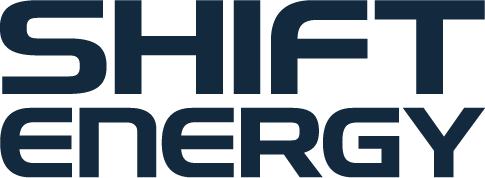There is a lot of debate going on right now about “ESG” – environment, social and governance, an umbrella term that covers business attempts to become more sustainable, inclusive, and accountable.
There are critics of ESG who argue that companies should only respond to the legal requirements imposed on them by government and regulators. If inclusiveness or sustainability is required, then it must be mandated, they claim. Otherwise, the business’ only responsibility is to its bottom line and shareholders.
This argument misses the reality that ESG initiatives can deliver meaningful ROI – Return On Investment. They are not a cost center – in fact, they drive new profitability and innovation.
At SHIFT Energy, we focus on applying new technology to help large facilities cut their energy consumption and carbon emissions. Yes, we have a sustainability component to what we do – buildings account for nearly 30 percent of global GHG emissions and society will not reach its Net Zero goals without addressing emissions from existing buildings. But SHIFT also saves money for building owners and operators by reducing energy consumption, saving up to 20 percent or more of a building’s energy costs.
A decade or so ago, the “Green Premium” often meant that more sustainable products or services cost more – now they can cost less, sometimes substantially less. The Green premium now means cost savings.
We see this in the growing competitiveness of renewable sources of energy like wind and solar with traditional thermal sources. A recent report by Clean Energy Canada found that wind and solar power are already cheaper than, or competitive with, natural gas on a kilowatt-per-hour basis, even without a price on carbon. With a growing price on carbon emerging, that differential is expected to grow substantially. So, we see that sustainability and cost-cutting in energy generation are not in opposition – they are now aligned.
Technology continues to advance, wringing more energy and efficiency from renewable energy sources. The same holds true with heating and cooling systems in large buildings. SHIFT is leveraging computing power to boost the performance of existing HVAC infrastructure and Building Automation Systems. Our algorithms use Machine Learning and other techniques to assess and understand patterns of data and make predictions about the future, leading to specific actions that delivers enhanced efficiency. We can do this in “real time” to cut energy consumption, lower costs, and curb carbon emissions.
Like renewables, we can do more with less. You can save money by cutting carbon emissions. What’s not to love about that?
Many ESG initiatives have been voluntary to this point, and let’s be honest, some of them have been plainly “greenwashing”. But regulators will soon start imposing penalties for carbon emissions beyond set limits for buildings in places like New York and Boston. The SEC is expected to begin requiring publicly traded companies to report on their emissions.
The cost of pollution will become an increasing part of the emissions reduction business case as more and more cities follow these early leaders. Today, 30 U.S. municipalities are phasing in higher standards for commercial real estate emission reductions and energy consumption, according to a report by Moody’s Investors Service. More are certain to follow.
But new technologies, like that from SHIFT, can make the challenge of retrofitting these office towers, college campuses, hospitals, data centers and more much faster and cheaper – we don’t require any new capital expenditures but instead maximize the performance of existing equipment. Think of it as a quick start on the journey to Net Zero.
That will be important – these new regulations will have a material impact on operating costs and a lot of building owners and operators will be scrambling to respond. The good news is that the green premium can now work to a building’s advantage – we can cut operating costs and cut carbon emissions.
Interested in learning more? Drop us a line.

